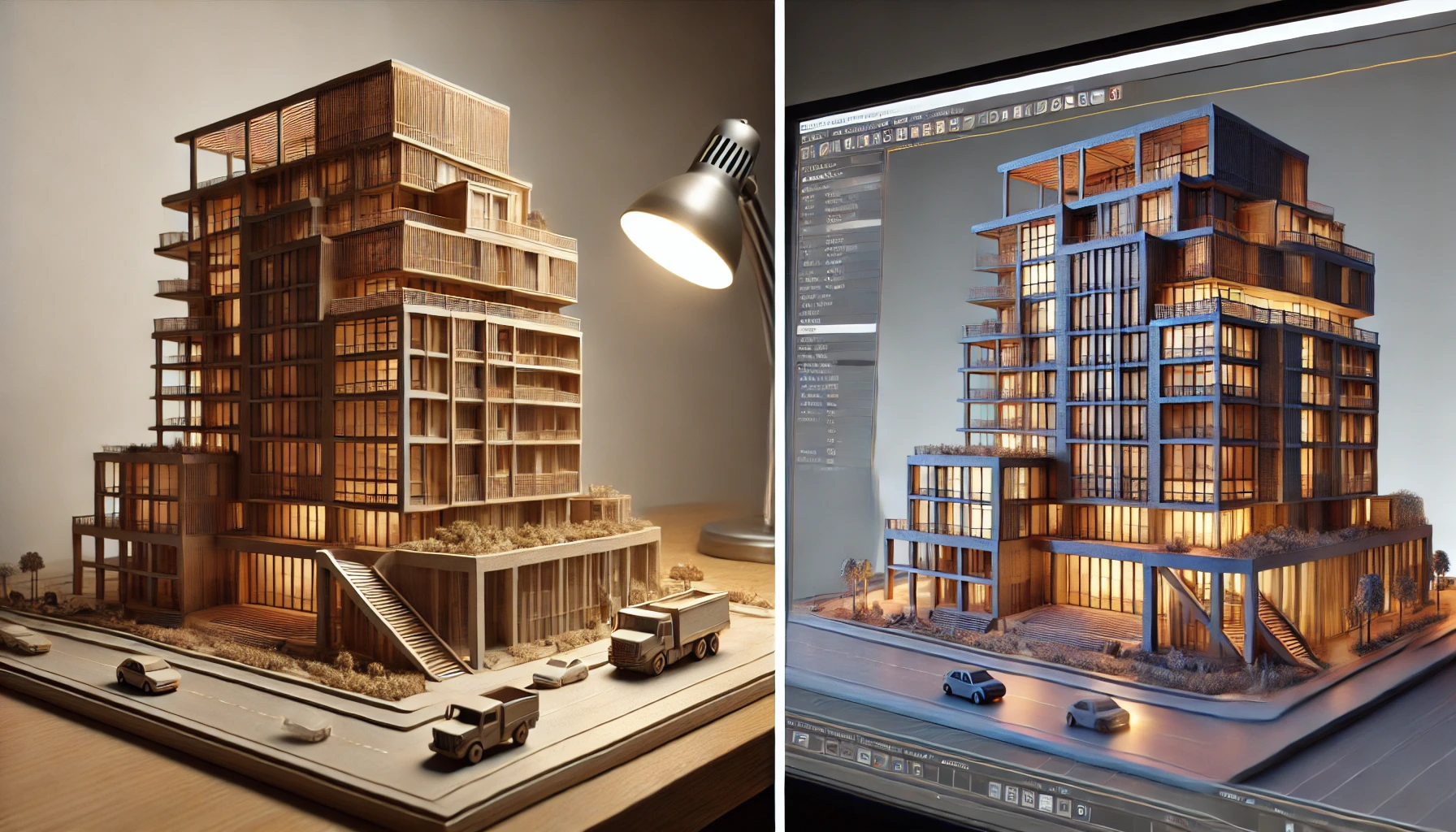
Presentation is crucial in the competitive world of real estate marketing. When prospective buyers and investors are able to see the outcome, they are more likely to be intrigued by the project, whether it be a mixed-use development building, residential complex, or commercial skyscraper. This is where scale models vs 3D renders comparisons come into play—two powerful tools that serve the same ultimate purpose: to bring architectural visions to life.
Scale models and 3D rendering services have different execution, impact, and roles in the marketing process, even though they both aim to showcase a project. Developers, architects, and marketers can select the most effective tool—or combination—for the best results simply by being aware of their unique benefits.
A scale model is a physical miniature representation of a development project, crafted to reflect architectural design, landscaping, and surrounding context. For decades, physical scale models have been a staple at launch events, exhibitions, or developer offices. They offer a tactile and tangible experience that digital visuals cannot fully replicate.
In an age dominated by digital visuals, being able to touch and explore a project model leaves a lasting impression. Potential buyers can walk around from multiple angles and experience proportions realistically.
At real estate expos or investor meets, an architectural scale model becomes the centrepiece. Its presence draws attention, sparks conversations, and conveys the seriousness of the project.
A physical model will especially help stakeholders who are not well-versed in architecture understand density, layout, and positioning in the environment.
Apart from initial campaigns, a scale model serves as a permanent display in sales galleries or corporate offices, continuing to impress visitors.
While 3D renders offer a layer of versatility and dynamic visual storytelling, scale models offer an unparalleled physical presence. When viewed in the Scale Model vs 3D render context, the two complement each other, ensuring every marketing phase from digital campaigns to physical showcases produces a comprehensive, captivating project vision.
A 3D architectural render is a computer-generated image or animation created with specialized software to visualize how a piece of architecture will look in real life. Today, 3D rendering services have transformed how real estate projects are marketed, offering unmatched speed, flexibility, and realism.
Modern 3D walkthroughs can mimic real-world textures, lighting, and materials with remarkable accuracy. This helps buyers visualize exactly how the project will look when completed.
A 3D render, unlike a physical model, can be updated easily to reflect the design changes, be it regarding facade materials, landscaping, or layout.
Render a single project from various perspectives without having to create duplicates. This allows for an array of visuals to enhance brochures, websites, and campaigns.
From property portals to social media ads, 3D renders are ideally suited for online platforms and can also be made into immersive VR/AR experiences, allowing buyers to explore spaces interactively.
For projects on tight timelines, renders can be created while construction is yet underway, thus allowing marketing to begin much earlier.
Choosing between a scale model vs 3D render is rarely a simple binary choice. The most successful real estate marketing initiatives frequently combine the two to enhance one another.
Choose a Scale Model when:
Choose 3D Renders when:
Imagine a launch event where an exquisitely crafted physical scale model is complemented by large screens displaying immersive 3D renders and flythrough animations. While the scale model captures attention and sparks curiosity, the renders provide close-up realism and detailed interior views. This dual approach strengthens the marketing message and caters to different buyer preferences.
A martech agency in India providing both 3D-rendering services and physical scale model building tends to harmonize marketing materials. They can help in the following ways:
The presentation of a project may be equally important as the project itself in the ever-changing arena of real estate marketing. In the scale model vs 3D render discussion, both emerge as essential, not competing tools. While 3D renderings offer flexibility, speed, and breathtaking realism, scale models offer a physical, powerful presence that exudes confidence.
Developers, architects, and marketers should consider them free forces rather than competing tools. When combined, they produce a powerful marketing tool that can captivate audiences, increase revenue, and materialize architectural ideas before the first brick is even laid.